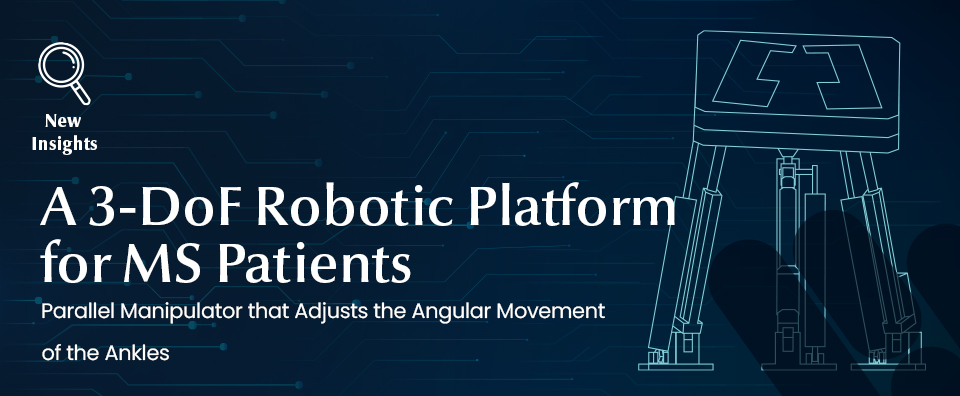New Insights/ A 3-DoF Robotic Platform for MS Patients


Istanbul Medipol University faculty member Dr. Elif Hocaoglu and her student Tugce Ersoy present the design, implementation, and experimental evaluation of a novel 3 DoF parallel manipulator to treat the balance problems in MS.
The robotic platform allows angular motion of the ankle based on its anthropomorphic freedom. Moreover, the end-effector endowed with upper and lower platforms is designed to evaluate both the pressure distribution of each foot and the CoM of the body, respectively. Data gathered from the platforms are used to both evaluate the performance of the patients and use the high-level control of the robotic platform to regulate the difficulty level of tasks. In this study, kinematic and dynamic analyses of the robot are derived and validated in a simulation environment. Low level control of the first prototype is also successfully implemented through the PID controller.

